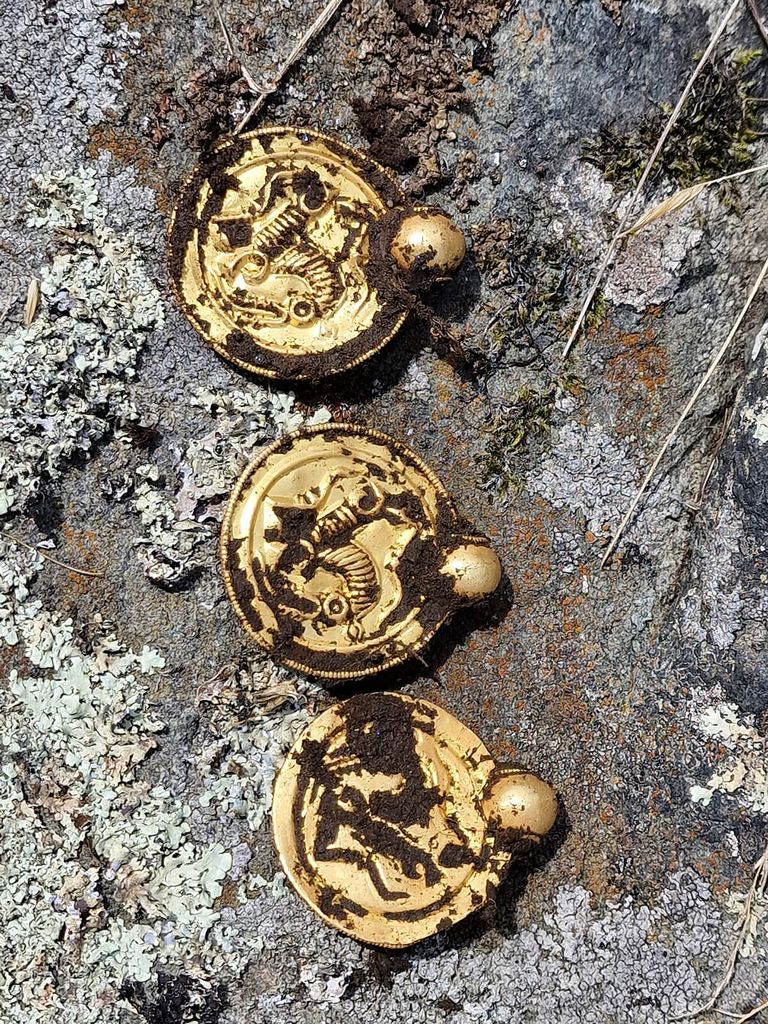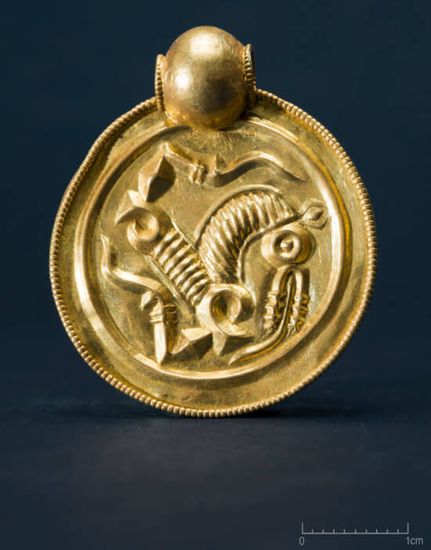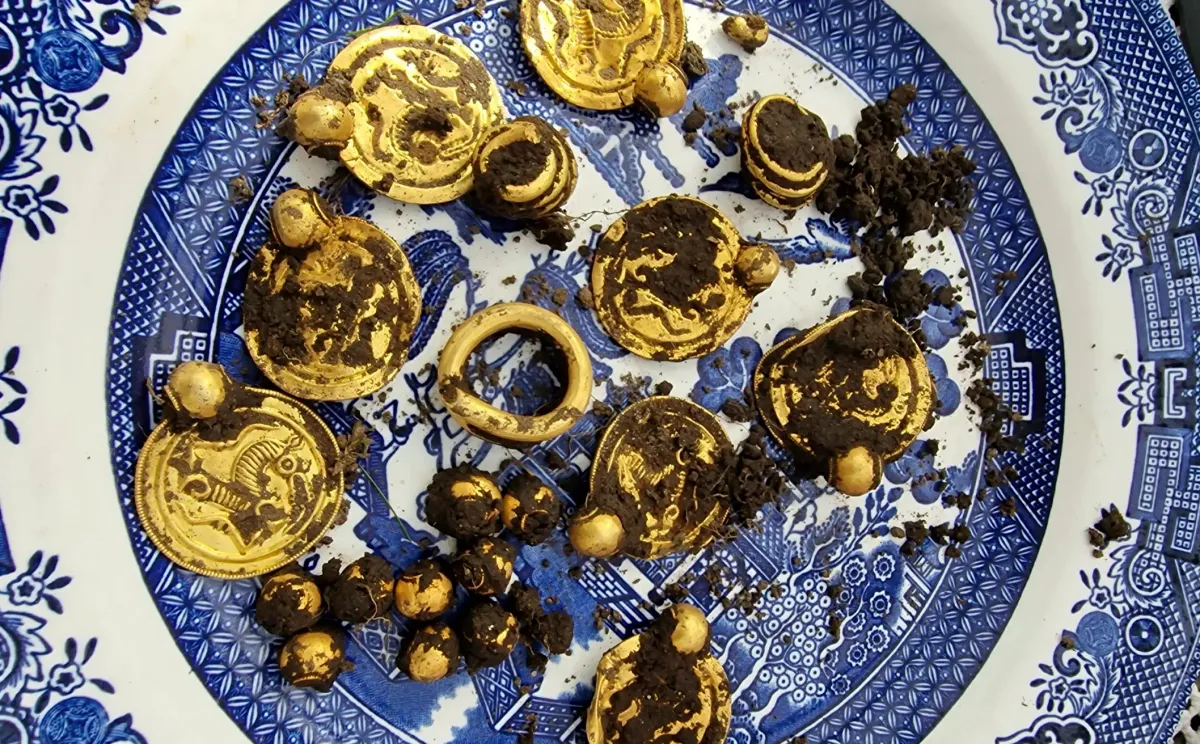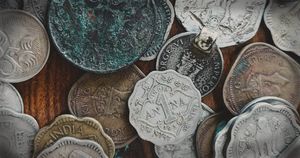Metal Detectorist Strikes Gold: Unearths 6th-Century Treasure Trove with Rare Horse Symbols – A Norwegian Historical Marvel
Extraordinary 6th Century Gold Find on Rennesøy Island, Stavanger
In an unprecedented archaeological revelation, a remarkable trove of gold artifacts dating back to the 6th century has been unearthed on the enchanting Rennesøy Island in Stavanger, Norway. This discovery has been hailed as nothing short of a monumental event for both history enthusiasts and gold aficionados alike.
“This is the find of the century in Norway. Discovering such a significant amount of gold at once is extremely rare,” exclaimed Ole Madsen, Director of the Museum of Archaeology at the University of Stavanger.
Erlend Bore (51), an amateur metal detectorist from Sola, near Stavanger, stumbled upon this astonishing treasure trove. It includes nine coin-like gold pendants adorned with rare horse symbols, accompanied by ten gold beads and three gold rings. The collective value of this precious haul remains considerable even after 1,500 years, with a total weight just exceeding 100 grams.
Bore’s journey to this historic find began when he purchased his first metal detector earlier this year. Initially searching along the shoreline, he only encountered scrap metal and minor trinkets. However, upon venturing inland, his metal detector began emitting a distinct signal that led him to the cache of ancient gold. “At first, I thought I had found chocolate coins or plastic pirate treasure. It was surreal,” Bore reminisced, describing the initial shock of his remarkable discovery.

The discovery took place on private property, with the landowner’s consent, adhering to the Norwegian Cultural Heritage Act, which mandates a finder’s fee to be equally shared between the landowner and the finder. The exact finder’s fee remains pending approval by the Norwegian Directorate for Cultural Heritage.
Associate Professor Håkon Reiersen, an expert at the Museum of Archaeology, determined that the gold pendants originated from around AD 500, during Norway’s Migration Period. These “bracteates” were ornamental rather than functional currency and were worn by society’s elite. Unearthing a cache of bracteates of this magnitude is extraordinarily rare, marking the first such discovery in Norway since the 1800s.
Reiersen hypothesizes that these treasures may have been hidden during a period of crisis marked by crop failures, harsh climatic conditions, and plagues, considering the numerous abandoned farms in the Rogaland region from that era. The gold pendants were likely either valuable possessions hidden away or offerings to the gods during this tumultuous period.

Professor Sigmund Oehrl, an authority on bracteates and their symbols at the Museum of Archaeology, highlighted the uniqueness of the horse motif on the Rennesøy bracteates. Unlike most others, these symbols solely depict the horse, suggesting injury or distress. This motif, akin to the Christian cross, symbolized hardship and hope for healing during the Migration Period, representing a fascinating intersection of ancient beliefs and symbolism.
Marianne Enoksen, Head of the Cultural Heritage Department in Rogaland County Municipality, expressed her excitement and praised Bore for responsibly reporting the discovery. All pre-1537 objects and coins predating 1650 are considered state property in Norway and must be reported.





